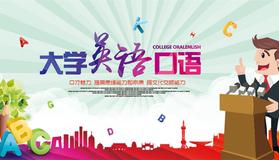-
1 扩展阅读
-
2 章节测验
Origins of Mid-Autumn Day
The Chinese have celebrated the harvest during the mid-autumn with a full moon since the Shang Dynasty (c. 16th to 10th century BCE). The celebration as a festival only started to gain popularity during the early Tang Dynasty (618–907 CE).One legend explains that Emperor Xuanzong of Tang started to hold formal celebrations in his palace after having explored the Moon-Palace. The term mid-autumn(中秋)first appeared in Rites of Zhou, a written collection of rituals of the Western Zhou Dynasty (1046-771 BCE).
Empress Dowager Cixi (late 19th century) enjoyed celebrating Mid-Autumn Festival so much that she would spend the period between the thirteenth and seventeenth day of the eighth month staging elaborate rituals.
For the Vietnamese, in its most ancient form, the evening commemorated the dragon that brought rain for the crops. Celebrants would observe the moon to divine the future of the people and harvests. Eventually the celebration came to symbolize a reverence for fertility, with prayers given for bountiful harvests, increase in livestock, and human babies. Over time, the prayers for children evolved into a celebration of children. Confucian scholars continued the tradition of gazing at the moon, but to sip wine and improvise poetry and songs. By the early twentieth century in Hanoi, the festival had begun to assume its identity as a children’s festival.
Moon Worship
An important part of the festival celebration is moon worship. The ancient Chinese believed in rejuvenation being associated with the moon and water, and connected this concept to the menses of women, calling it “monthly water”. The Zhuang people, for example, have an ancient fable saying the sun and moon are a couple and the stars are their children, and when the moon is pregnant, it becomes round, and then becomes crescent after giving birth to a child. These beliefs made it popular among women to worship and give offerings to the moon on this evening. In some areas of China, there are still customs in which “men don’t worship the moon and the women don’t offer sacrifices to the kitchen gods.”
Offerings are also made to a more well-known lunar deity, Chang’e, known as the Moon Goddess of Immortality. The myths associated with Chang’e explain the origin of moon worship during this day. One version of the story is as follows, as described in Lihui Yang’s Handbook of Chinese Mythology.
In the ancient time, there was a hero named Hou Yi who was excellent at shooting. His wife was Chang’e. One year, the ten suns rose in the sky together, causing great disaster to people. Yi shot down nine of the suns and left only one to provide light. An immortal admired Yi and sent him the elixir of immortality. Yi did not want to leave Chang’e and be immortal without her, so he let Chang’e keep the elixir. But Feng Meng, one of his apprentices, knew this secret. So, on the fifteenth of August in the lunar calendar, when Yi went hunting, Feng Meng broke into Yi’s house
and forced Chang’e to give the elixir to him. Chang’e refused to do so. Instead, she swallowed it and flew into the sky. Since she loved her husband very much and hoped to live nearby, she chose the moon for her residence. When Yi came back and learned what had happened, he felt so sad that he displayed the fruits and cakes Chang’e liked in the yard and gave sacrifices to his wife. People soon learned about these activities, and since they also were sympathetic to Chang’e they participated in these sacrifices with Yi.
Yang describes another version of the tale which provides a different reason for Chang’e ascending to the moon:
After the hero Houyi shot down nine of the ten suns, he was pronounced king by the thankful people. However, he soon became a conceited and tyrannical ruler. In order to live long without death, he asked for the elixir from Xiwangmu. But his wife, Chang’e, stole it on the fifteenth of August because she did not want the cruel king to live long and hurt more people. She took the magic potion to prevent her husband from becoming immortal. Houyi was so angry when he discovered that Chang’e took the elixir, he shot at his wife as she flew toward the moon, though he missed. Chang’e fled to the moon and became the spirit of the moon. Houyi died soon because he was overcome with great anger. Thereafter, people offer a sacrifice to Chang’e on every lunar fifteenth of August to commemorate Chang’e’s action.


